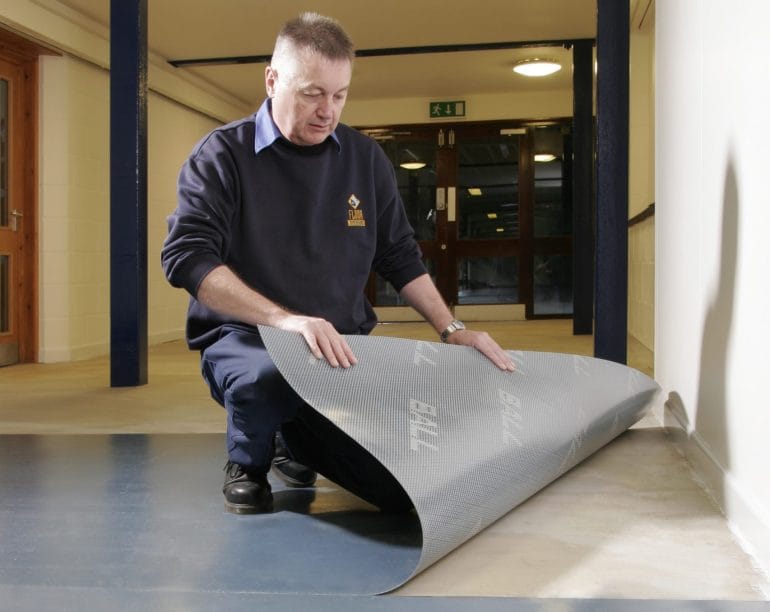Tech talk: Dealing with Subfloor Contamination

Avoiding floor failure or the need to replace a subfloor as a result of contamination.
Applying a smoothing compound to a subfloor is the usual step to creating a suitably smooth base for the receipt of new floorcoverings, helping to ensure a visually attractive finish. However, before doing this, contractors need to make sure that the substrate is suitably sound, smooth, dry and free of contaminants before proceeding.
Where contaminants are present, such as oil, grease, paint or other chemicals, remedial action will be required before a smoothing compound is applied to ensure proper adhesion of the smoothing compound to the substrate, avoiding the potential for de-bonding to occur, which could potentially cause complete floor failure.
Testing
Where surfaces are contaminated, the depth and type of contamination should be checked to determine if it is possible to prepare a surface for overlaying; oil can penetrate many centimetres into concrete, and although the surface may be cleaned, contaminates can migrate back to the surface.
Contractors should refer to local standards, for guidance. Recommended tests include taking cores from the most contaminated areas to gauge the depth of contamination and adhesion tests, looking for a tensile pull-off strength of at least 1.5 N/mm2.
Where contamination has penetrated the surface of the substrate, it will not be possible to simply remove it by cleaning; mechanical preparation will be required. Methods for doing this include dust-free shot/grit blasting and mechanical planing, scabbling, grinding or abrading. Hand tools may also be used for edges and hard to reach areas.
Alternative solutions
Where mechanical surface preparation will not be sufficient to properly remove the source of contamination, there is another alternative to completely removing and replacing the subfloor.
In situations where a fully bonded system is not required, instead of using a smoothing compound to prepare the subfloor prior to the installation of floorcoverings, contractors may use an isolator membrane, such as F. Ball’s Stopgap Isolator Membrane. Stopgap Isolator Membrane is an impervious loose lay sheet that can be laid over the contaminated subfloor, creating a barrier between the subfloor and floorcovering. New resilient floorcoverings are then adhered directly to the isolator membrane.
Adhesive residues
In some cases, contamination of the subfloor may be in the form of adhesive residues left behind when old floorcoverings were removed.
Traditionally, contractors would have had to remove old adhesive residues with the same mechanical means used for dealing with other types of subfloor contamination. Now, smoothing compounds are available that can be applied directly over old adhesive residues, providing a timesaving solution to the problem. These include F. Ball’s Stopgap 1200 or Stopgap 1500, which can be applied directly over minimal, well-bonded adhesive residues without the need for priming to save further time.
Final checks
Once contamination has been dealt with, contractors should, once again, assess the condition of the subfloor before proceeding with the installation. This involves checking the subfloor is suitably sound, smooth and dry. Dust or debris should be removed, and damaged subfloors should be repaired with an appropriate repair compound.
Where an isolator membrane is not being used to overcome subfloor contamination, a moisture test should be conducted to check the surface is dry enough to receive floorcoverings. Where subfloor relative humidity levels are above 75% (65% if wood floorcoverings will be installed), a waterproof surface membrane should be applied to prevent excess subfloor causing floor failure.